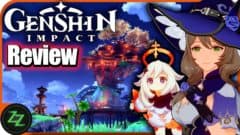With Starfield, we have a magnificent space RPG with rough edges in testing
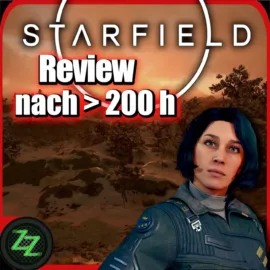
a magnificent space RPG with rough edges in testing
My Starfield PC Review after more than 200 hours of playtime, with gameplay from my travels through the Bethesda space RPG. I will tell you about my experiences and adventures in the Bethesda space RPG. My travel report after hundreds of planets and quests, with amazing highs and terrifying lows. Spaceship combat, planetary exploration in the open world, and NASA history mixed together to create a special game, but one that also has many problems.
Bethesda Game Studios successor to Elder Scrolls Morrowind, Oblivion and Skyrim, and Fallout 3 & 4 came out with release date on Sept 06, 2023. The game was released for Xbox Series X and S as well as for PC on Steam and in the Windows Store and Microsoft Xbox Gamepass. Welcome to my Review of the Bethesda Space Game.
This post is available as text and a YouTube Video (German Voice-Over, English Subtitles). So you can choose how you like to enjoy it most.
Starfield Review Video
German Voice-Over, many subtitles
German Version:
- With Starfield, we have a magnificent space RPG with rough edges in testing
- Starfield Review Video
- Starfield Review – Intro
- Game Type – Space Role Playing Game – What Starfield is and what it’s not?
- Basic Game Structure – Loading Screens and Zones
- Starfield Gameplay Pictures (Part I)
- Game Structure – The Menu System
- Hardware Requirements and Optimizations
- Starfield InGame Pictures (Part II)
- Starfield Gameplay – The Enemies and Combat
- The NPCs – Story and Characters
- German Synchronization (mostly irrelevant for English speakers)
- The Inventory – Management of the Loot Amounts
- Random Worlds – Procedural Generation
- Starfield Gameplay Pictures (Part III)
- The Quests – RPG and Storytelling par excellence
- The Graphics – Creation Engine 2 with a fancy new look
- Scope of the Game – The Expanse of Space
- Ship Building – The Spaceship Lego Kit
- Base building – Create your own Stations and their Purpose
- The Temples and the Skills
- Starfield Test – Opinion and Conclusion
- Starfield Review – Rating
- Outro
- Links and Sources
- Starfield InGame Images (Part IV)
Starfield Review – Intro
Hello out there, Zap here. Welcome to my Starfield review. I’m going to tell about my observations from nearly 200 hours of Starfield playtime and rank them as Bad, Mixed, and Good. I will try my best not to tell any spoilers.
Starfield is a very special game, and it will be a very special review. So it will be a bit different from my other reviews. Given such a massive game, the review will also take a while. I’m trying to simplify it a bit with chapter markers, so you don’t have to consume it all at once but can hop back and forth between topics more easily.
As a preliminary note, I’ve played all the Bethesda Games Studios games since Daggerfall and Morrowind and have probably spent a total of somewhere between 5 and 10,000 hours in all of them together. But please don’t think this is a fanboy report. Even though I have a fondness for BGS games, there is still plenty for me to criticize in Starfield.
This time there was no testkey, so I bought the game at full price like everyone else. But I always review all games anyway, with the thought in the back of my mind, how would I feel if I had paid full price?
The test is based on the Steam PC version, which had its release date on September 6, 2023, I can’t say anything about the special adaptations on the XBox. I played the first hundred hours completely without mods, after that I installed a few mods, but they didn’t make any serious changes to the game.
Game Type – Space Role Playing Game – What Starfield is and what it’s not?
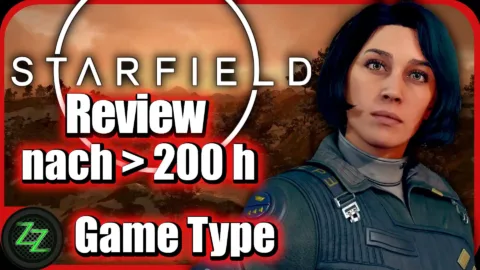
Game Type – Space-RPG
First of all, Starfield is no Star Citizen, Elite Dangerous, or No Man’s Sky. But it was probably never the aim of the game to be. So it’s not a space simulation, where traveling between the stars is considered a simulation. There are definitely similarities there, but also a lot of differences in the direction of all these games.
So in Starfield, there’s no emphasis on maneuvering from one planet to another as seamlessly as possible, or even taking off from planet A and landing on planet B at some point without ever seeing a loading screen.
But even in the aforementioned games, “realism” is often very malleable. This is understandable because no one wants to play a precise and exact simulation that depicts a journey between planets lasting several years, including all the boredom, the emptiness of space, cryo-sleep issues, etc.
That really wouldn’t be fun for anyone. Even those games severely shorten these elements or pretend that planetary systems are only a few tens of thousands of kilometers apart to make a halfway playable experience out of traveling between the stars.
Starfield, on the other hand, is an RPG, with a very strong focus on stories, character development, and a great many different ways to accomplish quest objectives. It has space combat and travel between planets, but that’s more as background, meant as a backdrop, and an element to tell stories. It is not the main core of the game to simulate this as accurately as possible.
Starfield offers less seamless transitions here. There are loading screens and space travel is very much abbreviated. So anyone who expects a space simulation and judges Starfield on the basis that it doesn’t meet this requirement has misunderstood something. Someone once said that you shouldn’t judge a fish by how well it can jump. That’s why I don’t see it as negative that Starfield is not a simulation, but a role-playing game.
Basic Game Structure – Loading Screens and Zones
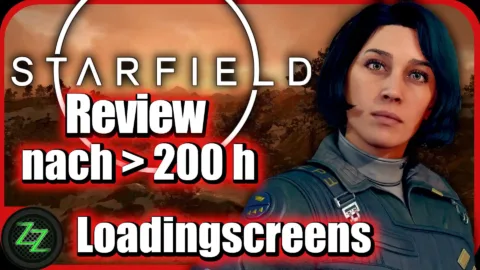
Structure of the Game – Loading screens and Zones
There has been some harsh criticism that Starfield is a loading screen simulator. And unfortunately, I have to say that I can’t or don’t want to refute that completely. The number of loading screens is too high for my taste as well. If you have installed the game on an HDD or a slow SSD, contrary to the recommendation, they can take 15–30 seconds. With an NVME SSD, it gets a bit better, but with a growing save game, the pauses get longer and longer.
In addition, there is a circumstance that confuses me in terms of game design. Although the changes between individual zones are displayed directly as loading screen graphics, animated sequences have also been added, such as during takeoff and landing, for example, or at the airlocks. Many games use such animations as loading screens in disguise. Bethesda already did this in Fallout 4 with the elevators, so they could do it.
But these sequences are disappointingly not used as a hiding place for loading times. So there’s the animation, and then an additional loading screen, and then yet another animation before you arrive. If these animations had been shown here instead of the loading screen, it would have been much less noticeable and distracting.
However, as a connoisseur of Bethesda games, I must also note positively that they have made quite an effort to avoid loading screens in many other places. In Fallout or Elder Scrolls games like Skyrim, most buildings outside are just dummies. And you only enter the building through a door, and then a so-called interior cell is loaded. But in Starfield I see many, many buildings where that was avoided.
As an example, take the many stations on the procedurally generated planets. There are rarely any real loading screens here. The buildings are almost always directly integrated into the world of the planet. This also means that you can often climb out the top, hop off the roof, and look in and out through the windows.
Starfield Gameplay Pictures (Part I)
Click or tap on the image for a larger view.
In the enlarged view, you can scroll right and left on the edges
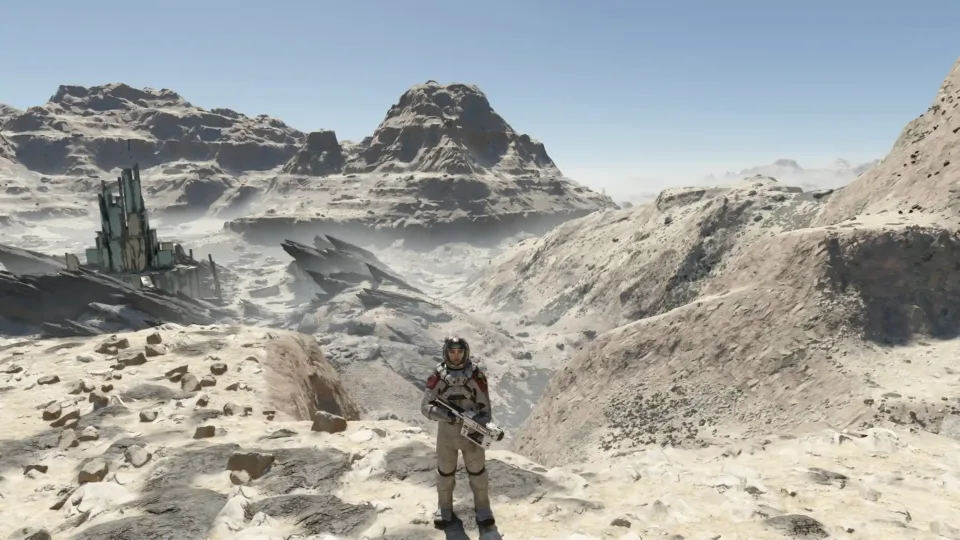
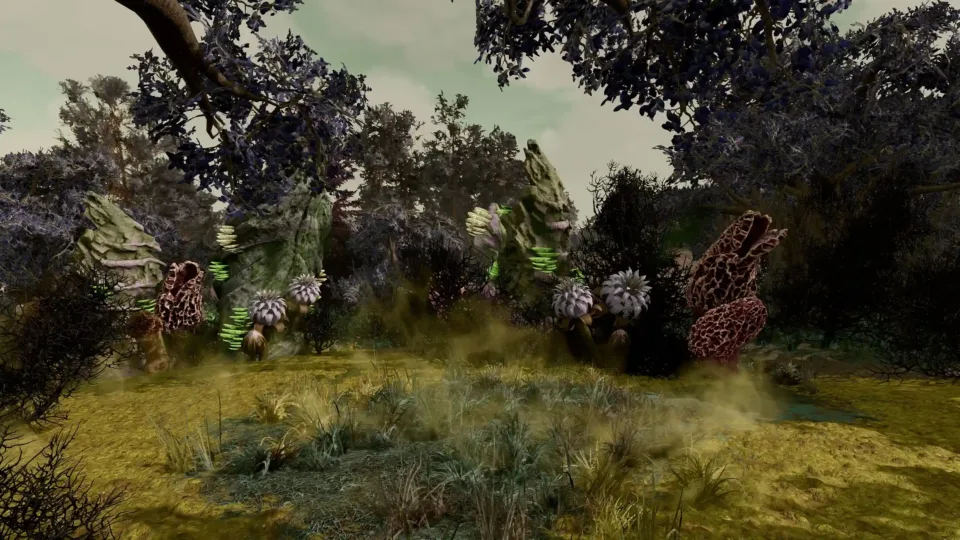
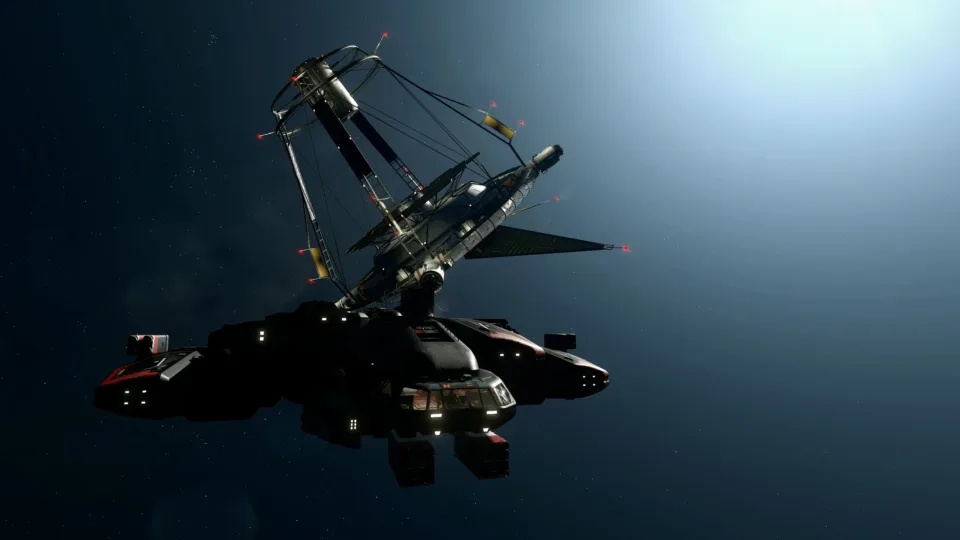
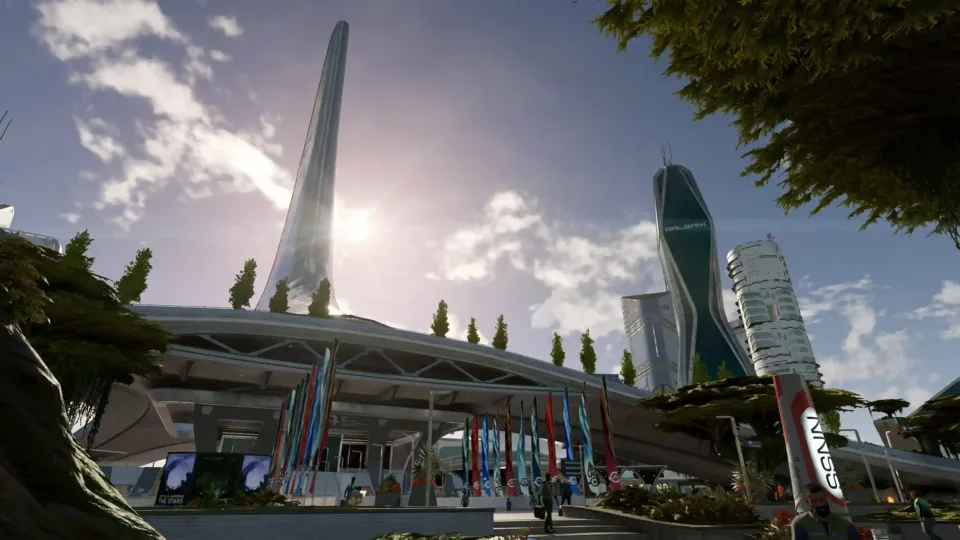
Sun over New Atlantis
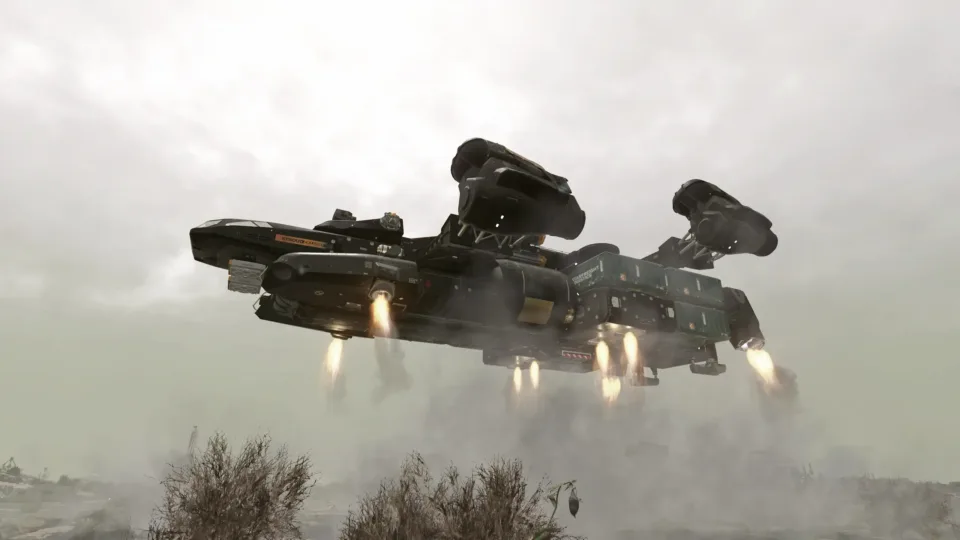
Up up and away
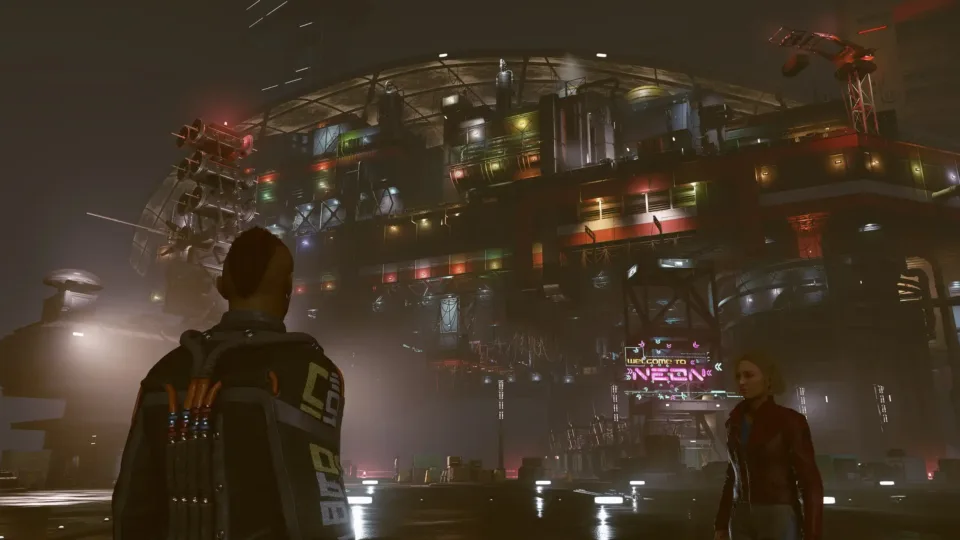
Welcome to Neon
Unfavorably, this is mostly disfigured by airlocks, which end up looking like a loading zone without technically being one. Physical realism also makes such airlocks kind of reasonable, but unfortunately for me, this amount of airlocks interrupts the flow of the game a lot, and I click, wait, click, wait.
It acts like a loading screen and slows down the gameplay. Something else should have been thought of here. After all, this is 300 years in the future, some sci-fi invention-solution-explanation could have been found for sure, but it wouldn’t have caused so much waiting time.
I can also think of cities as a particularly negative example of loading zones. True, New Atlantis is a huge city, and the game designers technically built it as a completely cohesive entity that could be played without loading screens. Someone once tested, you can jump down from the MAST tower and reach almost any part of the city, except the Undercity, directly.
Unfortunately, the layout is so awkward that it would take too long to travel around on foot, and the alternative of using the map or the city train always leads to loading screens.
In Neon, too, the city was actually designed completely as one. You can look down from the highest roofs and see the harbor and the individual districts are accessible. But from the flow of the game, it’s always outdoor, loading screen, core, loading screen, other outdoor, loading screen, core, etc.
There are a lot of quests there that send you back and forth, and the amount of loading screens per quest is very high in that area. It really interferes with the flow of the game. I could understand it if there was no other way technically. But obviously, they designed the cities to be so big and then chopped them up artificially at some point, and not even very skillfully.
Bethesda is kind of stepping on its own toes here. On the one hand, they’ve improved their technology to make larger zones, and then on the other hand, they break it again themselves. I suspect New Atlantis and Neon would have been too massive without these loading screens that it would still have been smooth with the 10GB RAM of the Series S or on weaker PCs.
Game Structure – The Menu System
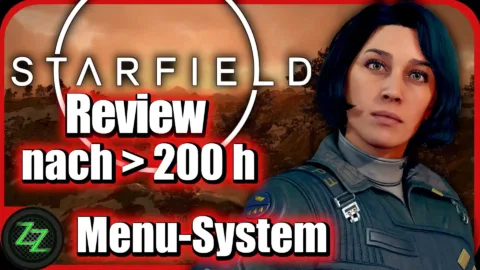
Game Structure – The Menu System
Of course, I would also like to see fewer loading screens and especially less cumbersome menu structures. Because here, Bethesda has unfortunately been stuck in an overly complicated menu system for many versions of their basic game structure. And new levels of complexity in the game features make the menu structure in Starfield even more annoying than in the predecessors.
The Tab key takes you to the overview, and there are also shortcut keys for the skill window, inventory, etc. But to get back, you theoretically have to press Tab several times. There is the option to jump directly back into the 3D world by holding Tab for 2 seconds. But this is not explained anywhere, and I only noticed it after almost 100 hours of play.
In general, there are numerous such cumbersome systems. The star map is another such thing. If you are on a planet and want to quickly jump to another one, you can do this via the quest log, if you have a quest there.
But if you don’t have a quest right there, you have to press M for the map, you end up on the local planet map, and then you have to press Tab several times until you’re on the map of the universe, then find the new system, then click there several times until you’re zoomed back down to the planet, and then you can find the marker that you want to jump to there.
Planning a trip this way sometimes consists of 8-10 clicks and keystrokes, quite inconvenient. Similar clumsy solutions exist in the research menu, crafting, shipbuilding, etc. I can’t think of a better solution right away, but comfortable and fluid are somehow different.
Hardware Requirements and Optimizations
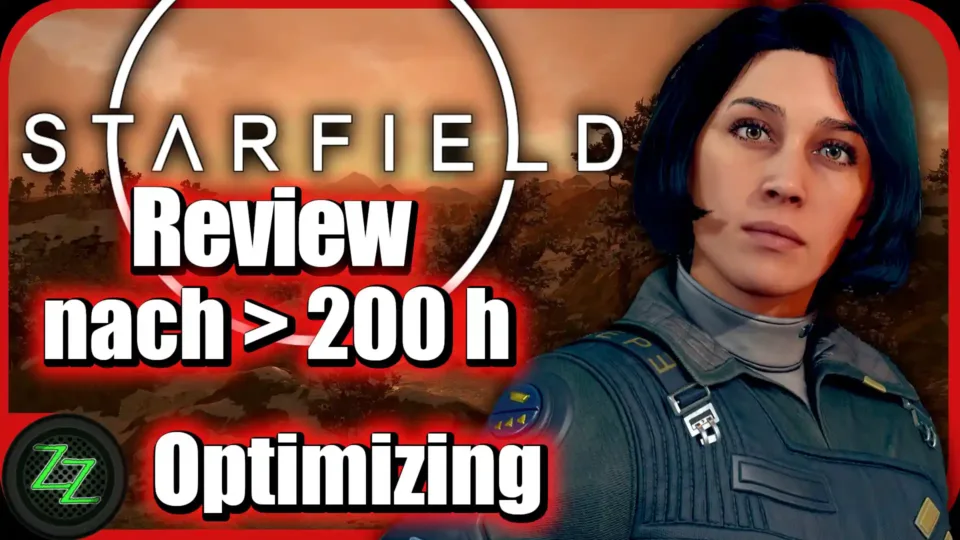
Hardware Requirements and Optimizations
On the Xbox consoles, the program is probably quite well adapted to the existing hardware and optimized for it. On the PC, however, there are big differences. To achieve 60 FPS in ultra details, regardless of whether 1440p or 4k, you need very expensive hardware. Alternatively, you have to resort to FSR upscaling or installing the corresponding DLSS mods for NVidia graphics cards.
In the meantime, Bethesda has also announced that it will offer DLSS directly and also make further optimizations to the performance. But still, the PC has probably only been second fiddle here once again. Microsoft probably insisted that it had to run well on the XBox. The further optimization is only done after the release, which is quite a pity.
I’m lucky to have an RX 7900 XTX, and it runs very well with that, even without upscaling. But that would probably also be awful if it wouldn’t run well with a graphics card for over 1000 Euros, after all, you can already get an Xbox Series X for half as much.
Another point in this area is the partial lack of optimization of settings. By this I mean things like the possibility of changing the so-called FOV, i.e. the viewing angle.
Also, the settings for brightness and contrast as well as HDR and ultrawide monitor support, all simply did not exist at release. These are actually standard stuff on the PC. It has since been promised that it will be delivered later, but with a title like Starfield, such settings should simply be available at release. And when exactly the update for this is supposed to come is still not yet clear, even a month after release.
Starfield InGame Pictures (Part II)
Click or tap on the image for a larger view.
In the enlarged view, you can scroll right and left on the edges
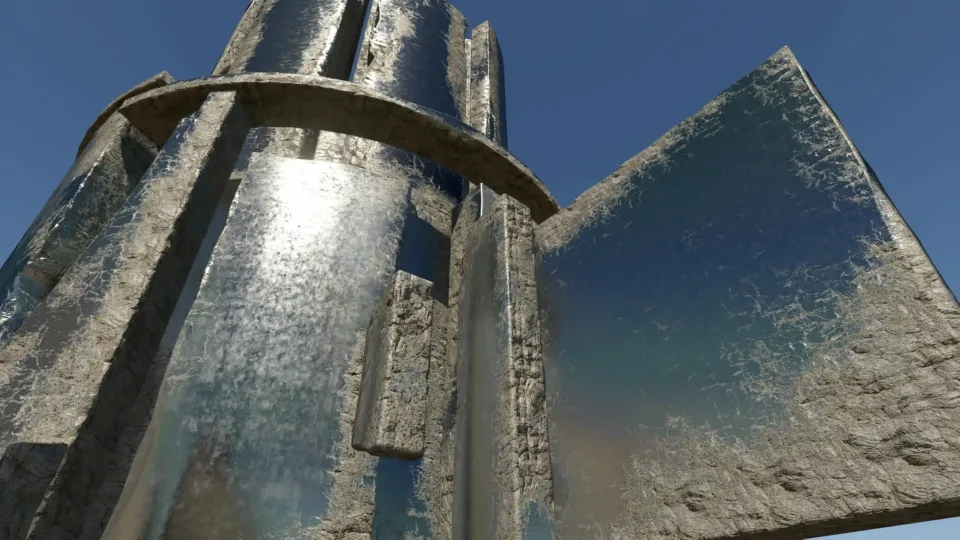
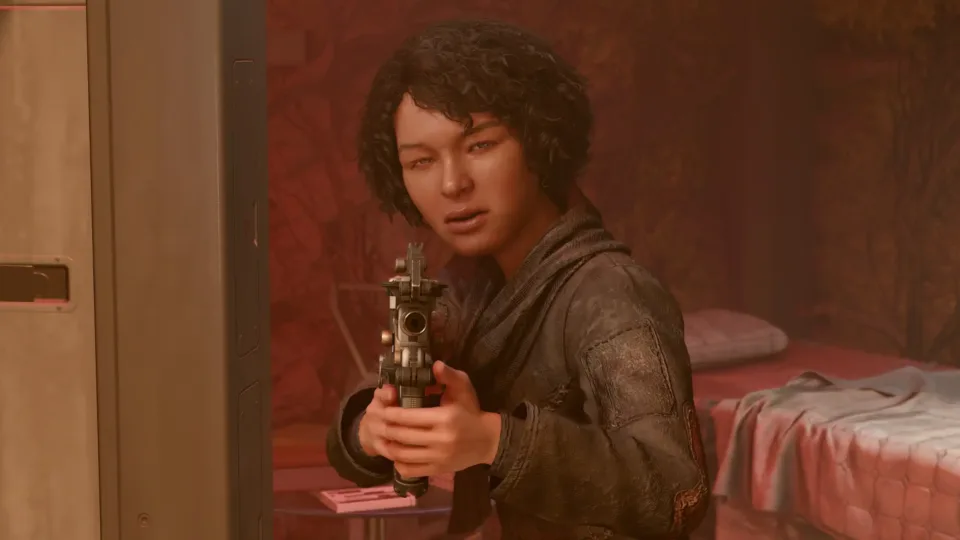
Better be careful
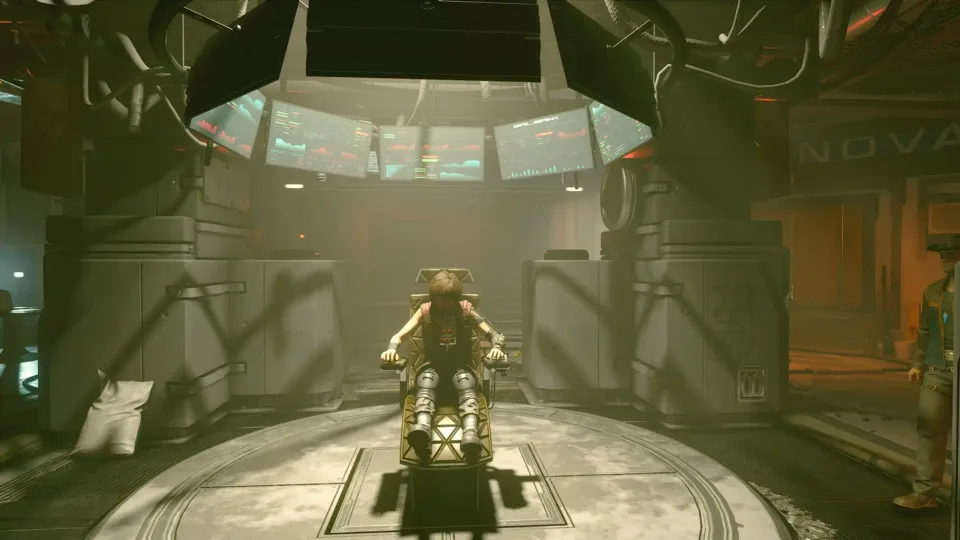
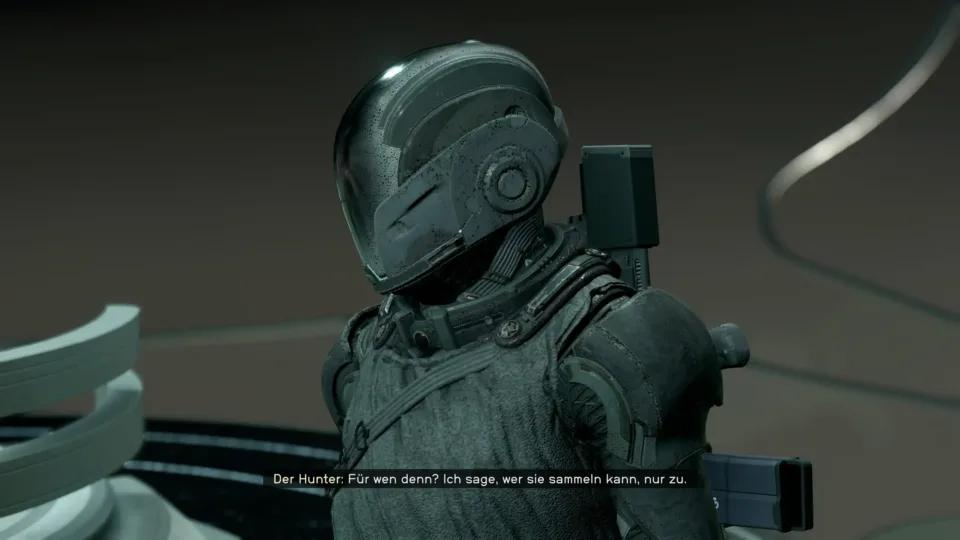
Meet the Hunter
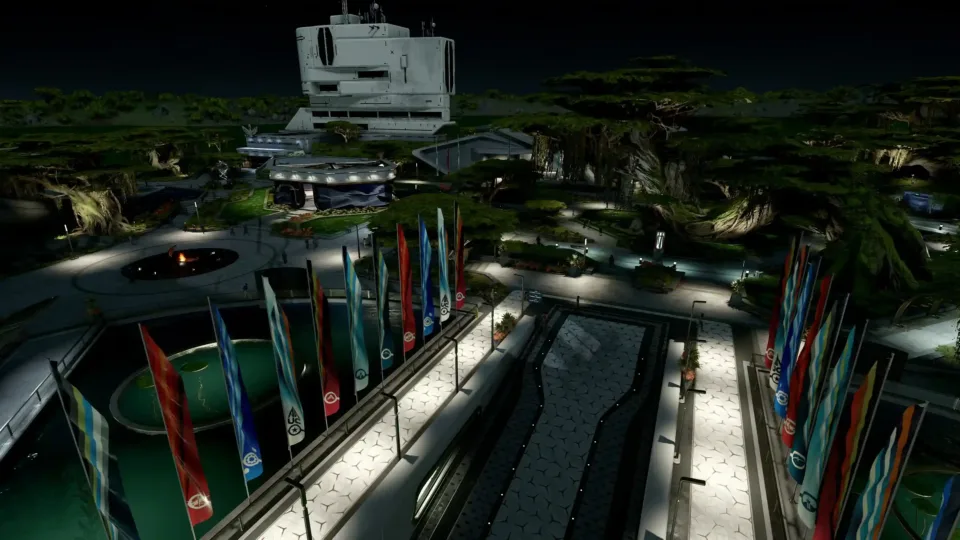
New Atlantis at Night
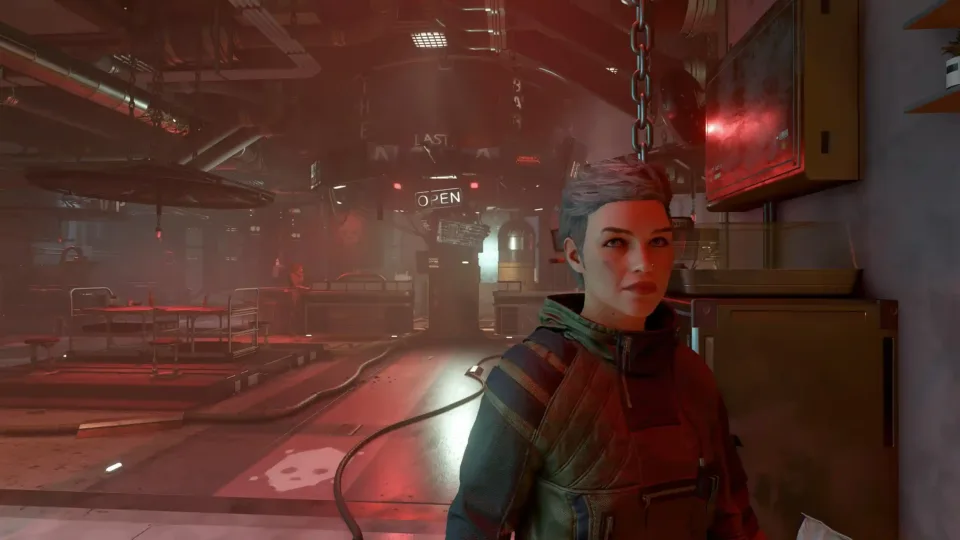
Nice pirate woman
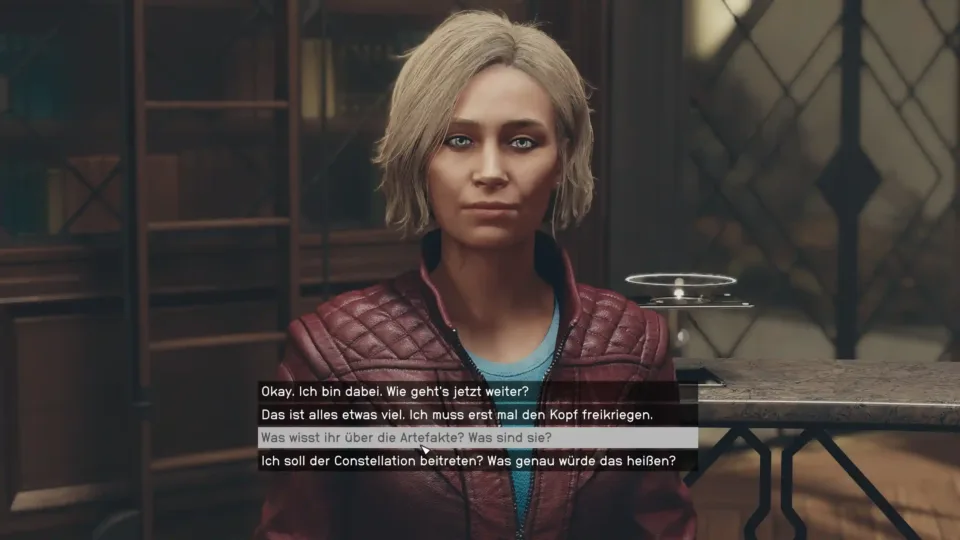
Sarah Morgan – Leader of Constellation
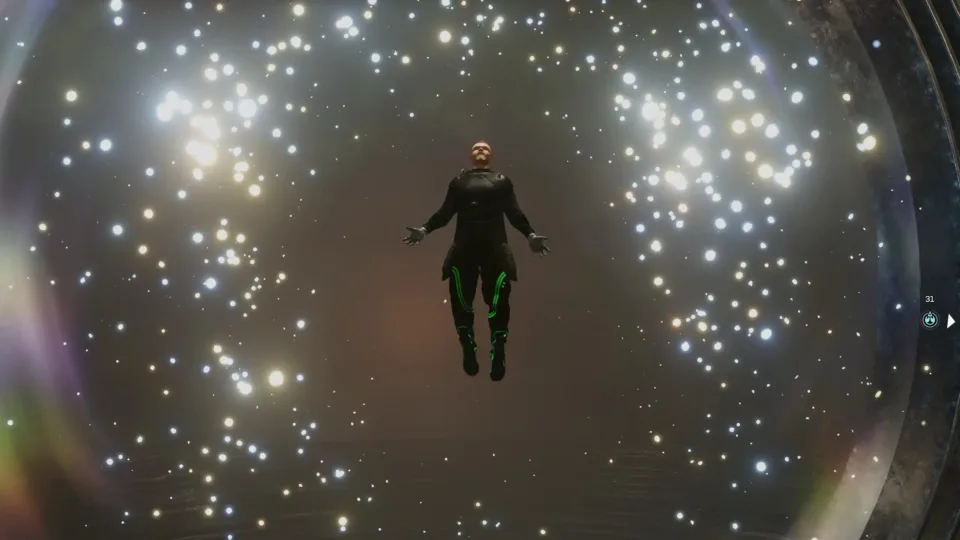
Starfield Gameplay – The Enemies and Combat
Unfortunately, there are only a few outstanding enemies in Starfield. Tougher boss versions of the human troops appear very seldom, and the aliens on the planets are, with very few exceptions, somewhere between peaceful and victims.
There are a few that attack from time to time, and if you get high-level versions of them, they can hurt. But impressive fights rarely arise from that. Probably also because it always happens on a wide and open plain. Sometimes the enemies attack in groups of 6-10, and then it gets a bit more exciting, but that rarely happens.
I absolutely miss creepy giant beasts comparable to Deathclaws, Mirelurk Queens, Ogres, or Dragons as they existed in previous Bethesda games. There are a few rare Terrormorphs, but they just barely appear outside of the quest line that exists for them.
Don’t misunderstand, there are a lot of different variants of animals. But with the number of planet systems, it does happen that certain species reappear on almost every 2nd populated planet.
And with the humanoid opponents, 80% are either spacers, ecliptics, or pirates. And they don’t have particularly creative clothing either, each faction has its standard look, and it’s rarely deviated from. The previous games somehow managed this better, with more suspense and variety. Overall, this limitation of enemy richness makes the entire combat area quite weak, according to my feeling.
The NPCs – Story and Characters
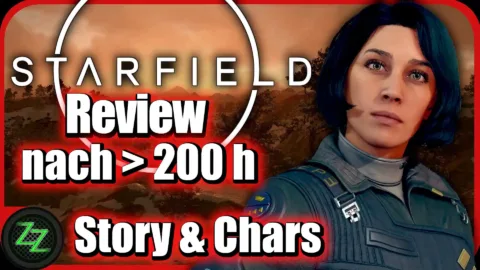
The NPCs – Story and Characters
The character design of the NPCs is extremely inconsistent, both visually and in terms of behavior and speech options. Presumably, this is not abnormal in titles that are built by more than 500 people as a collaborative effort. But with this issue, they should have worked more evenly.
There are characters and scenes where the game manages to evoke anger or sympathy, belligerence, or sadness in me because some characters are so intensely portrayed and well-written. A few of the quests are really excitingly staged, allowing for numerous decision-making options, different solutions in the conversations, etc.
But then there are moments when I wonder how they could have been handled with so little care and commitment. For example, there are two little girls in the game who both play extremely strong roles. And someone at Bethesda thought, oh, they’re probably not that important, we’ll just make a copy and paste character out of them.
And so they both play enormously conspicuous roles in the story, but on the other hand, they look exactly the same. And they can even show up in the same place at the same time. A laughable monument of poor game design, amid the highest-quality storytelling I’ve ever seen in Bethesda games.
Even generally speaking, Starfield is a bit of a step backward in terms of NPC complexity. In Elder Scrolls and Fallout, at least the important NPCs often have a daily routine. They come to a workplace, have a living space, and possibly a place for leisure as well, and you can see them commuting back and forth between them and even having a chat with the neighbor once in a while. This doesn’t always happen, but it does happen fairly regularly.
While in the previous BGS games, almost all NPCs have a name, even if they are completely unimportant, in Starfield there are masses of “citizens” who, similar to Cyberpunk, kind of randomly walk through the city and rarely interact with anything. If you try to talk to them, they say one of 5 to 6 standard phrases and keep on walking. Very rarely NPCs with names walk around in between.
But almost all NPCs that you need for any quest are completely stationary at first. They might move back and forth during the quest, and in rare cases, they might move to a certain place via scripting. But aside from that, they are almost always standing around stiffly, 24 hours a day, with no daily routine at all.
This struck me as quite negative. The script language of the Creation Engine offers a lot of possibilities to make NPCs much more complex. That’s one of the engine’s biggest strengths, and it’s something that was done a lot in the past.
The complex NPC movements and their daily routines were already an outstanding feature in Morrowind. It gave the world a very special charm and in all successors, this was used all the time. But in Starfield, it’s mostly missing, wasted potential to the power of 7.
German Synchronization (mostly irrelevant for English speakers)
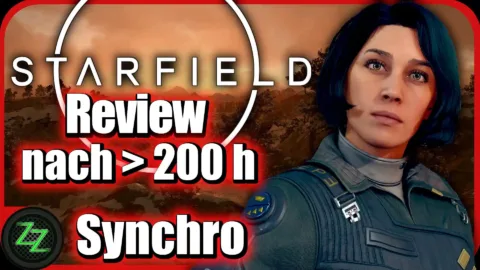
(mostly irrelevant for English speakers)
There are two major points of criticism here, which reinforce each other. On the one hand, complex facial animations have probably been incorporated into the voice output in English, but this has been completely neglected for the German synchro. As a result, the facial animations and lip movements are tightly pre-set to the English language. If you switch the game to English, this looks quite good.
In German, however, this results in the speech and the faces being completely disconnected from each other. Nothing is lip-synced and the movements often don’t match at all. Very often, the speech samples are still running when the NPC’s face has already completed all movements. It requires a bit of self-control to tolerate this.
The whole thing is made even worse by a very inconsistent dubbing. It happens quite often that NPCs change the quality of the voice output in the middle of a conversation. First, there are three normal sentences, and suddenly a sentence sounds as if it was recorded in a completely different room, with a totally different mix. And in some conversations, even the person speaking seems to change in the middle of the conversation.
I guess here the translation was done in several sections, or they changed the dubbing studio. In any case, I can’t remember when a synchro has ever been so jumbled. On top of that, the choice of voice actors sometimes doesn’t match the characters. It sounds strange when an NPC stands in front of you in the game, who is visually maybe in his late 20s to mid-30s, but the dubbing voice sounds more like 60-70 years old.
Don’t get me wrong, the voice samples are mostly okay and the actors don’t do a bad job. But the mixing and the changes in the conversations as well as the missing facial and lip sync devalue the good work.
An anecdote still at the end to the topic, once I had to laugh out loud when in New Homestead on the moon Titan a voice spoke to me that the colony would be more like a face museum (German Gesichtsmuseum). The subtitles clearly said history museum (German Geschichtsmuseum), but I still wonder what such a face museum might look like.
The Inventory – Management of the Loot Amounts
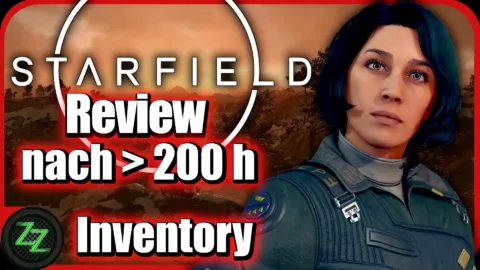
The Inventory – Management of the Loot Amounts
Even for console gamers, this inventory system must be a pain. Not only does it bother me that everything is a cumbersome list that you have to scroll forever. But also that everything has to be divided into different “containers”.
You find tons of stuff, even if you only take the most necessary, and afterward, it ends up in the player inventory, with the NPCs, in the captain’s box, in the ship inventory, in bases, containers. This was often creepily inconvenient in the previous games, but Starfield takes it to the extreme.
Because now, in addition to the inventory and that of the companions, there are also 2 cargo rooms in the ship, storage boxes in the lodge, in the apartments, in the outposts, and you can make quite a lot of them over time. So you’re very often hauling larger quantities of different items from box A to inventory B and then back to box C again.
And quite often you’re looking all over the place when you need a certain item, and that’s with the cumbersome handling. Here I praise the PC version because the experienced mod community has greatly improved the operation of the various containers and inventories within a very short time. Thanks to the StarUI mod.
And since I have no problem cheating a bit in a single-player game, I modded my companions to have unlimited carry weight, so they are like the unlimited chest in the box at the Constellation cellar, but always right behind me. If you have any questions about mods or console commands, feel free to post them in the comments, and I’ll answer and explain them if needed.
Random Worlds – Procedural Generation
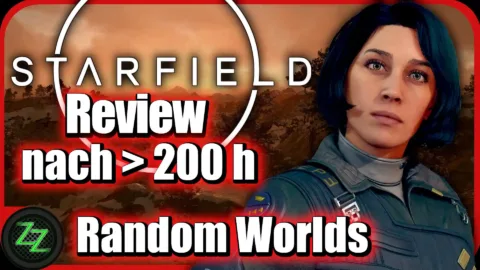
Random Worlds – procedural generation
Bethesda has always worked heavily with randomly generated NPCs and enemies. In every game, numerous characters were ultimately diced, in terms of their level, appearance, clothing and equipment, and stats. This is also done in Starfield.
However, now the planets are filled with procedurally generated content. The composition of the planets is already predefined, the resources, flora, and fauna, as well as the general arrangement of things, are probably already contained in the database and are the same from game to game.
But which mine base, which power plant, or which cave appears where is then a matter of chance. And here, on the one hand, Bethesda has built an enormously good tool that is capable of creating varied planets.
To me, almost every planet seemed special. Apart from the fact that ice planets with 3 resources, without flora and fauna, offer little opportunity for differences.
But what bothered me was that the selection of stations, mines, and caves was somehow much too small for the scope of the universe depicted in Starfield. And so you unfortunately find the same 3–4 mines, the same 2–3 research stations, the almost same 6–7 caves over and over again.
It would not have been a huge technical effort to simply add more choice here, as far as I know the Creation Engine. I used to build mods too, for Morrowind, Oblivion, Fallout 3, and Skyrim, and I know a bit about the tools used. It’s not that super elaborate to create such small places.
So here, despite the long development time, and despite 500 employees, they somehow severely neglected a really important aspect of the game, either for cost reasons or for whatever reason. The hope remains that this lack of diversity in the generation of planets will probably be extremely easy to expand for mod builders. Maybe Bethesda will even give us a DLC that fixes the lack a bit? Whereby “donated” will certainly mean sold here.
Starfield Gameplay Pictures (Part III)
Click or tap on the image for a larger view.
In the enlarged view, you can scroll right and left on the edges
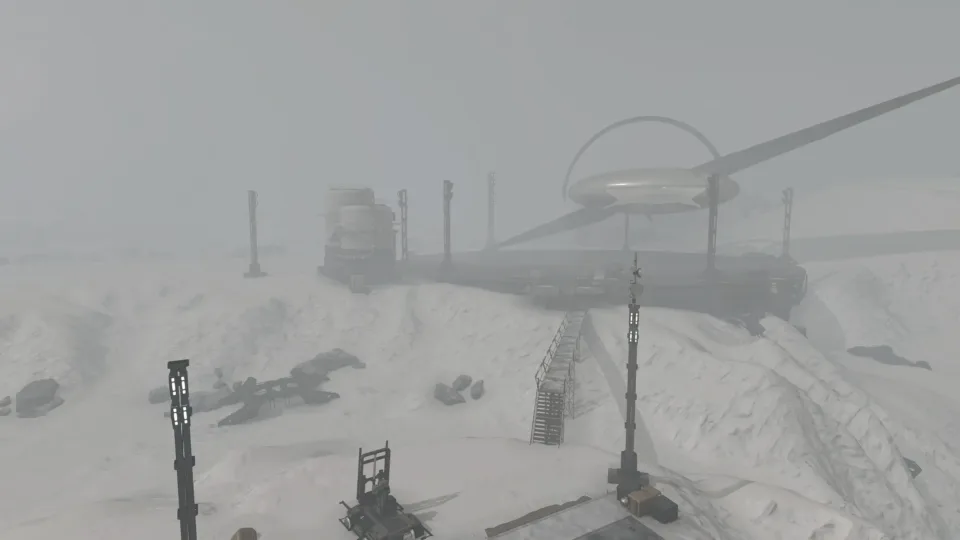
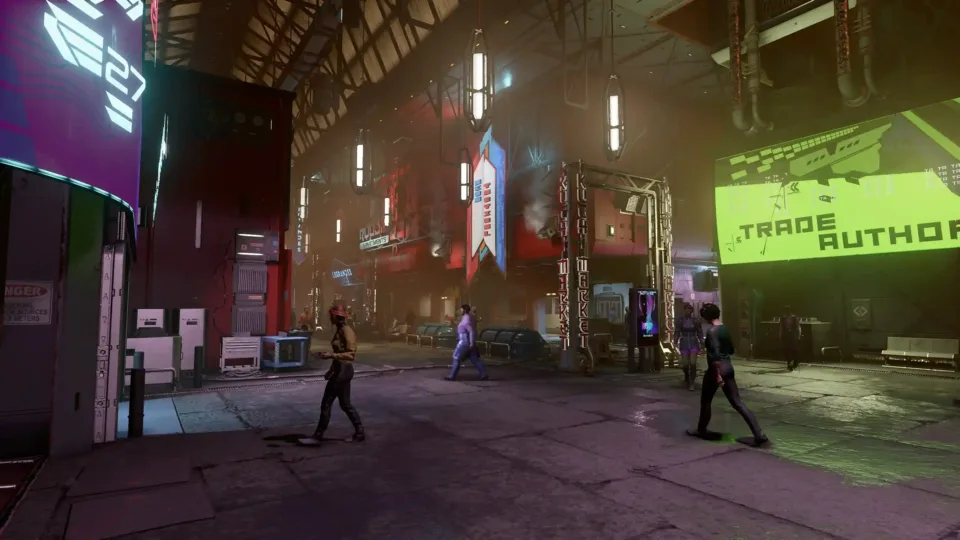
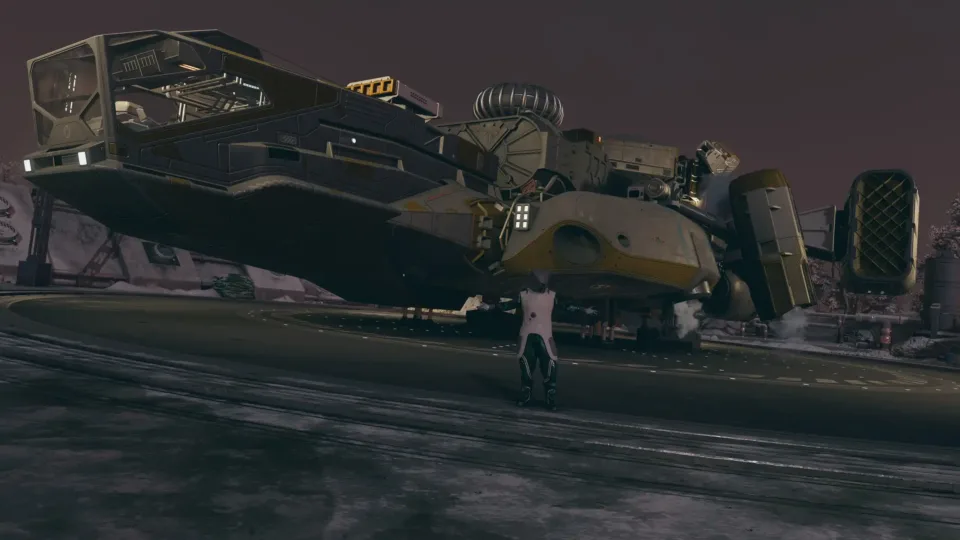
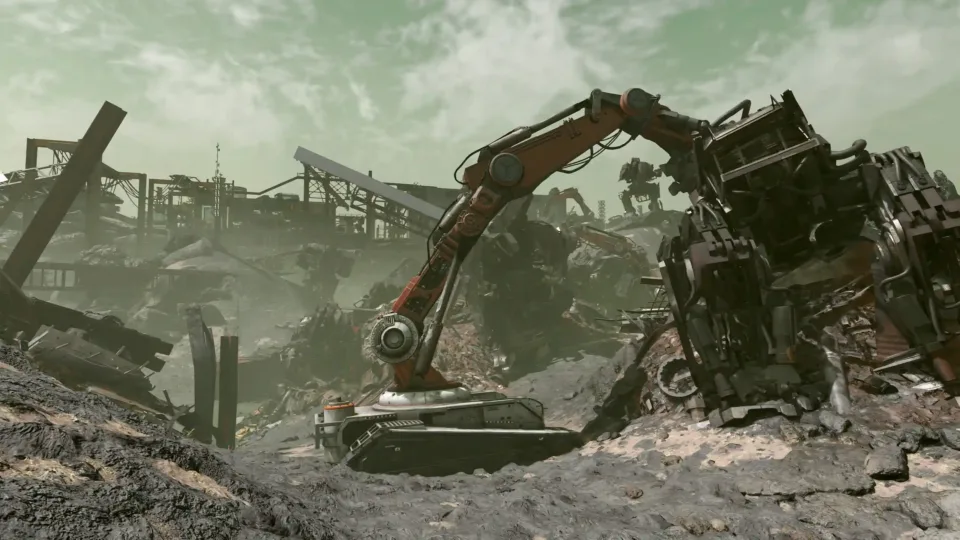
The Scrap Yard of War
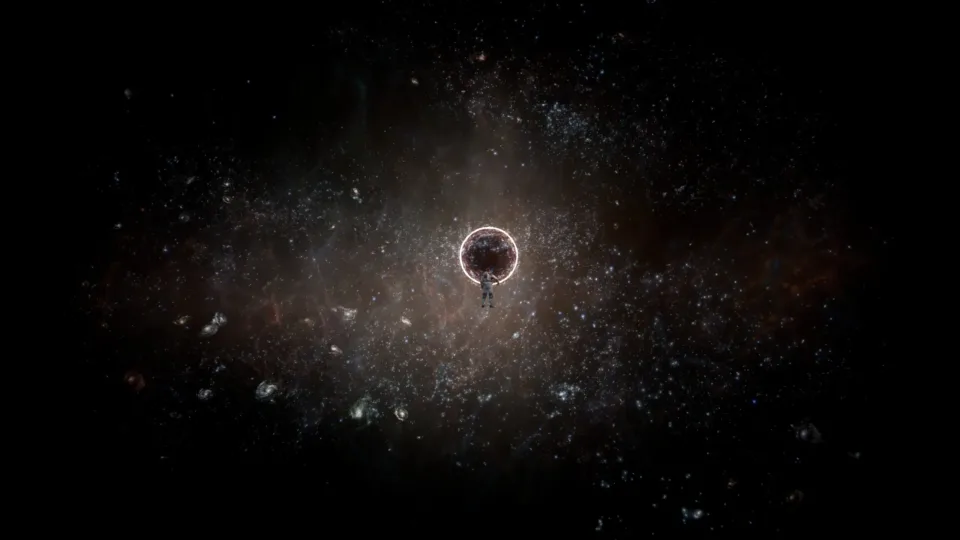
We all are Stardust

Welcome to Neon
The Quests – RPG and Storytelling par excellence
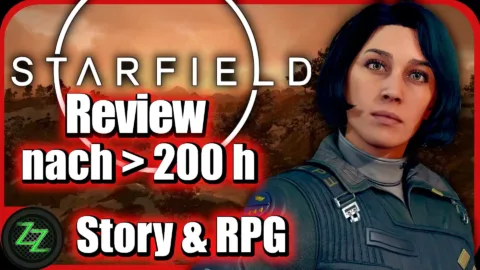
Quests, Storytelling & RPG
The story is truly brilliant. Not only the main quest is extremely extensive, but also some faction side quest lines are absolutely recommendable. And then there are some fun questlines that you can find somewhere in the world that can be enormously inspiring.
The faction questlines are extensive and elaborate across the board. And there are quite a few of them, besides the Constellation, also the UC Intelligence, the Pirates, the UC Navy, the Freestar Rangers, and the Rijuyin corporation offer exciting and lasting questlines. In addition, there are an enormous number of small and medium-length quests that sort of stumble across your path.
I remember a great side quest with clones of famous people from the history of the earth, which you could find somewhere on a planet, where you never have to pass. That was a great show, and again, strong decision-making possibilities in the course of the quest.
The entirety of all the quests is somewhere between overwhelming and absolutely impressive in terms of sheer quantity. You can easily spend 50 to 100 hours questing here, even without the infinite randomly generated bounty and seek-and-find quests.
And I think Starfield is also the best in terms of storytelling, dialogue, and emotional depth in many of the questlines that Bethesda Game Studios has managed to create in any of their games so far. All of the predecessors were classics in their own right, but Starfield is a notch or two above in quest and character design for my taste. In addition, there are always special conversation options that are unlocked by certain character abilities or perks, so character decisions open up additional possibilities throughout the story.
Of course, there are always downers as well as low points in between and the random quests always immediately stand out in between, as they are pure pastime or exp farm sources and sidelines. But the faction quests and the main story have really strong moments and lots of decision-making. I liked that better than very many quests in Morrowind, Oblivion, Skyrim, or Fallout 3 and 4.
The Graphics – Creation Engine 2 with a fancy new look
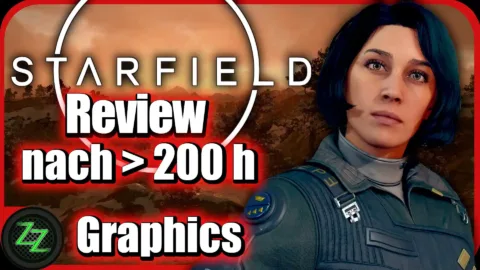
The Graphics – Creation Engine 2 with a fancy new look
Even though many complain about the allegedly old-fashioned Creation Engine, the graphics in Starfield have been greatly enhanced, at least in most parts. It doesn’t turn into a motion-capture movie like some AAA action titles like Last of Us, Spiderman, or the like.
But for the scope of the story and the amount of characters in the game, it’s somewhere between good and fantastic. Also, the cities, planets, cave systems, and bases are almost all fancy, at least if you can play it with ultra-detail and have the right hardware for it.
There are a few outliers on the downside. The faces of the citizen NPCs, for example. They are, apparently to have more of them running around, not even half as good in graphics as the main characters.
Presumably, this is reduced on purpose to pay tribute to consoles and weaker PCs. Again, a strange design decision. Seeing such low-resolution NPCs next to the other high-detailed characters is somewhat disturbing. Generally, such a mix of different quality levels looks very noticeable and unattractive. But with texture packages and mods, at least on the PC, it will certainly be possible to do something about this.
Scope of the Game – The Expanse of Space
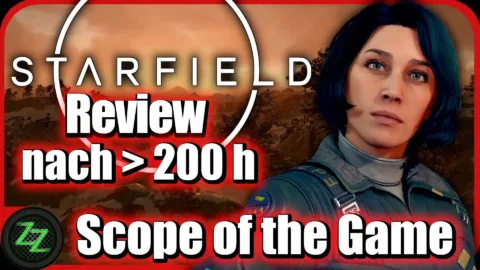
Scope of the Game – The Expanse of Space
The universe is phenomenally huge. At the very least, the amount and detail on the many planets and moons, in the cities, stations, and mini-caves that function like a kind of dungeons, is impressive.
The worlds are assembled from a huge pool of building elements, and this is really a particular strength of Bethesda’s Creation Engine 2. The bottom line is that you’ll always find planets that look very unique because they offer a particular composition of landscape, plants, animals, and other design elements. But even here there is not only sunshine, sometimes planets are almost empty, only broken up with random places, and since these random places often repeat themselves, this can also seem boring and demotivating.
In many places, however, quests and side quests await with small stories and opportunities to develop your own little adventures. There is enough to do for hundreds of hours or more.
Ship Building – The Spaceship Lego Kit
![Starfield Review - Bethesda's Space Role-Playing Game in the Test 35 Starfield Review - Grandioses Space-RPG mit spitzen Ecken & harten Kanten im Test [PC Deutsch] - 12 Ship-Builder - Schiffs-Editor und Schiffbau](https://zapzockt.de/wp-content/uploads//Starfield-Review-Grandioses-Space-RPG-mit-spitzen-Ecken-harten-Kanten-im-Test-PC-Deutsch-12-Ship-Builder-Schiffs-Editor-und-Schiffbau-480x270.webp)
A great highlight of Starfield is the ship editor. Here you can modify your spaceships, which you have bought, conquered, or received as a reward. And if you distribute a few skill points in the right places and head for the right spaceports, you have hundreds of components at your disposal.
There are very few limits to your creativity here. In the end, it’s a bit like a giant spaceship Lego kit. And then you not only see your construction flying around all the time, in cutscenes and space, but you also feel its changed values in combat and when traveling through space. So there’s not only visual but definitely also gameplay value in getting active here and trying out different building styles and components.
So everything we build and the choice of our parts has a direct influence on our gameplay. The spaceship thus becomes a second main character. If you like variety, you can even collect up to 10 spaceships and change them at will in each spaceport or build specialized ships for particular challenges.
This feature is something special and probably kept me busy for 20 hours alone. Because I kept redesigning, embellishing, upgrading, and pimping my flying crates. And then I enjoyed seeing my own creation over and over again in the world and sequences. And then the interior of the spaceship is actually the better player housing, compared to most homes you can buy or get through quests.
Base building – Create your own Stations and their Purpose
![Starfield Review - Bethesda's Space Role-Playing Game in the Test 36 Starfield Review - Grandioses Space-RPG mit spitzen Ecken & harten Kanten im Test [PC Deutsch] - 13 Base-Building - Basenbau](https://zapzockt.de/wp-content/uploads//Starfield-Review-Grandioses-Space-RPG-mit-spitzen-Ecken-harten-Kanten-im-Test-PC-Deutsch-13-Base-Building-Basenbau-480x270.webp)
Base building – Create your own Stations and their Purpose
In contrast to the ship-building kit, the base building somehow didn’t grab me at all. I started building something 1-2 times, but it was never anything remarkable. The building system just didn’t appeal to me.
I also kept scanning for planets and analyzing them. In the hope of finding something special, something that might grab me, and then build a great base there. But for me, somehow, that hasn’t been meaningful enough.
I lack, at least so far, the proper motivation to build my own station. I guess you can farm plenty of resources there if you do it right. But actually, you don’t need them currently that much.
Unless you want to build an experience point farm, where you level up extra fast by building parts from the masses of resources at the workbench. But my character level wasn’t that important to me, so I didn’t want to spend a lot of time building bases.
In Fallout 4 I built a lot of settlements, enjoyed the new NPCs that came along, and very often I could find a use for these settlements later. There you also had to take care of food, water, and electricity supply, set different professions, and so on. And with the Sim Settlements mod, I really savored that. But so far, there’s nothing of that in Starfield at all.
The Temples and the Skills
A rather important part of the game will be the skills later on. I won’t go deeply into this to avoid spoilers, because the background would give away quite a bit about the main story. But in short, you get some kind of supernatural powers unlocked, roughly comparable to the Fus-Ro-Dah screams from Skyrim.
We can be ambivalent about the significance of this. Whether Starfield needed this, I have doubts. In the announcements for Starfield, there was talk of a Nasapunk setting that takes place in our world, just 300 years in the future. So a lot of it is more realism with some sci-fi mixed in. Even if, for example, there is no use of smartphones in the game, which seems rather unrealistic.
And then you come along and offer the player some kind of alien magic. But if it’s there, you can take it, I guess. But now comes the gameplay implementation of how to acquire these abilities, and here BGS has somehow completely lost the plot.
Roughly speaking, this unlocking runs exactly the same for every skill. You always visit the same NPC, and get a planet named, there you can then discover an “anomaly” on the planet already from space. So you can land right next to it, then you run roughly 500 m to a building, go in, and do a minigame there. And after that, you are ported out and attacked by someone.
And this sequence is always exactly the same, for all 24 skills. Neither the building varies, nor the minigame, nor the attack. It’s the same thing every time, and it’s a bad minigame and a boring fight and the same thing over and over again.
On top of that, Starfield does offer an NG+ and you can level these skills up to 10 levels in the end as a result. So here, if you wanted to have all skills at maximum, you are expected to repeat this process, which is already extremely boring to annoying the 2nd time at the latest the 5th time, a total of 240 times?
WTF, which game designer thought that would be a good idea to do copy-and-paste here 24 times? And it’s not an unimportant sidequest, but this mind-numbingly boring thing is an important part of the main quest? How can you wave something like that through as “that’s okay, let’s release it that way”?
Starfield Test – Opinion and Conclusion
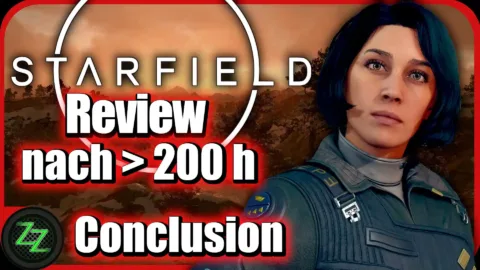
Starfield Test – Opinion and Conclusion
Now that was a lot of criticism. But still, I played 200 hours and also had a lot of fun in the game. I thought about it for a long time and asked myself why. What captivated me?
In short, Starfield is a very special game, with many ups and downs. It’s not easy to compare to other games, because it’s just a huge mix of a large number of game elements into something very special.
Not all of these parts are top-notch, some games that specialize in one or a few of these parts may do one or the other particular feature better, look prettier doing it, or offer better performance.
Maybe No Man Sky is the better planetary exploration game, maybe Elite Dangerous and Star Citizen are the better space flight simulators, and maybe Baldur’s Gate is the better role-playing game. But despite all the flaws in the individual parts, the mix of this game genre mixture is so unique and special that it captivated me tremendously.
Starfield is probably unique in this variety and mix of features. Space, spaceships, exploration, role-playing, extensive story, and many other elements make up a whole that is much more than just the sum of its parts.
And even with the New Game Plus, they’ve come up with something very unique, which I won’t spoil here. But in short, there is a strong story incentive to play through the game multiple times.
It’s just that Bethesda must have set different priorities for the individual components that make up the game during development. And so some are absolutely top class, like the spaceship designer, some quests, the basic principle of procedural planet generation, or some parts of the graphics.
Others are rather mediocre, like the small selection of different designs of random locations or the rather weak enemy variations. Finally, some are really bad or simply neglected, like the base building, the random NPCs, the temple sequences, or even the performance itself.
And so I can’t understand some of the evaluations of Starfield. It’s a real blast, that’s true. But it still has so many rough edges, so many oddities and sins of omission, that I find a 10/10 rating pretty ridiculous.
But on a side note, I also thought Baldur’s Gate 3 deserved a mid-80s rating at most, even though I’m probably attracting a lot of angry voices with that statement. I played it for 40 hours, saw a lot of bugs and experienced some boring parts, and then lost interest.
Starfield is a maximum highlight for Bethesda fans, simply for the reason that Bethesda releases a game only every 4-6 years. And as a fan of this very special kind of game, each one is a hit in its own right. But each of them has always had strong weaknesses, so they are not suitable for every type of player, especially not at the time of release.
Some BGS games also had a lot of weak points, which only found their true greatness after a few DLCs and updates, as well as with a few hundred mods from the community. After a few years, even the downward outliers, which in my eyes also include Skyrim, have subsequently improved a lot and become real gems in the history of games.
I don’t even want to start talking about Fallout 76, which is also not a “normal” BGS game. There is a completely different team behind it, and it can only be improved to a very limited extent by mods due to the online part.
All that remains for me to say is that I had an enormous amount of fun in Starfield. But I’m also a so-called “fan” of the way BGS builds games. Therefore I am right in the middle of the target group. Whether you belong there as well is a question you can only answer yourself, because that could shift the rating up or down by at least 10%.
But at the same time, I cursed and scolded a lot when I saw some things that could have been done better with relatively little effort. I’d like to remind you of the two girls looking the same, or the far too little variety in the stations on the procedurally generated planets, especially in the temple sections.
Therefore, despite all my love for the genre, the basic concept, and the “series”, I can’t give Starfield a top rating. As far as you want to see Starfield as related to Elder Scrolls and Fallout, I already see a company concept that all BGS games share.
But too much has simply been neglected, too much has been built half-heartedly, and too many important things have not been optimized. And that hurts the overall impression, which is otherwise excellent. In some respects, Starfield is, unfortunately, a considerable step backward compared to Skyrim and Fallout 4, even if it represents a big step forward in some other areas.
Starfield is therefore still a pretty good game in the form in which it is now available on the market. But it just doesn’t feel finished at this point. It’s excited me a lot, but it’s also disappointed quite often.
And now that it’s out in the wild, so to speak, it can become an excellent and phenomenal game with DLCs and lots of mods, but that’s going to take another 1-2 years. Until then, it’s pretty good, but definitely not perfect.
Starfield Review – Rating
It’s not easy to sum up Starfield with a final score in a single number. The emotions and experiences are that far apart, it went from astonished open-mouth moments to anger and almost crying over the omitted or neglected things with me. Therefore, I give 90% as a basic rating. However, I then deducted 5% for poor hardware optimization, and another 5% I have to deduct for the many unfinished game elements that are uneven in quality.
This brings me to a final rating of 80% for Starfield in its current state. I am very, very sure that over the next 12-18 months, patches, DLCs, and mods will make up for this 10% deduction.
Of course, this is a subjective opinion of mine. And I think it’s even possible that, depending on your preferences as a gamer, it could be the perfect game for some right now. But for others, the cold horror might grip them and they might feel that Starfield is something they don’t want to play at all.
Starfield
![Starfield Review - Bethesda's Space Role-Playing Game in the Test 40 Starfield Review - Grandioses Space-RPG mit spitzen Ecken & harten Kanten im Test [PC Deutsch]_q](https://zapzockt.de/wp-content/uploads/Starfield-Review-Grandioses-Space-RPG-mit-spitzen-Ecken-harten-Kanten-im-Test-PC-Deutsch_q.webp)
My Starfield PC Review after more than 200 hours of playtime, with gameplay from my travels through the space RPG. I will tell you about my experiences and adventures in the Bethesda space RPG. My travel report after hundreds of planets and quests, with amazing highs and terrifying lows. Spaceship combat, planetary exploration in the open world, and NASA history mixed together to create a special game, but one that also has many problems.
Rating
It’s not easy to sum up Starfield with a final score in a single number. The emotions and experiences are that far apart, it went from astonished open-mouth moments to anger and almost crying over the omitted or neglected things with me. Therefore, I give 90% as a basic rating. However, I then deducted 5% for poor hardware optimization, and another 5% I have to deduct for the many unfinished game elements that are uneven in quality.
This brings me to a final rating of 80% for Starfield in its current state. I am very, very sure that over the next 12–18 months, patches, DLCs, and mods will make up for this 10% deduction.
Of course, this is a subjective opinion of mine. And I think it’s even possible that, depending on your preferences as a gamer, it could be the perfect game for some right now. But for others, the cold horror might grip them, and they might feel that Starfield is something they don’t want to play at all.
Outro
Do you like to explore huge worlds and experience good quests? Or are loading screens and copy-and-paste designs, not your favorite thing? Feel free to write me your opinion in the comments below or in the Community Discord.
You can find more gaming news, game reviews, and guides on the YouTube channel or here at https://zapzockt.de – click your thumbs-up, subscribe, and share with friends won’t hurt, and then I wish you a great day, ciao ciao, your Zap
Links and Sources
Starfield InGame Images (Part IV)
Click or tap on the image for a larger view.
In the enlarged view, you can scroll right and left on the edges
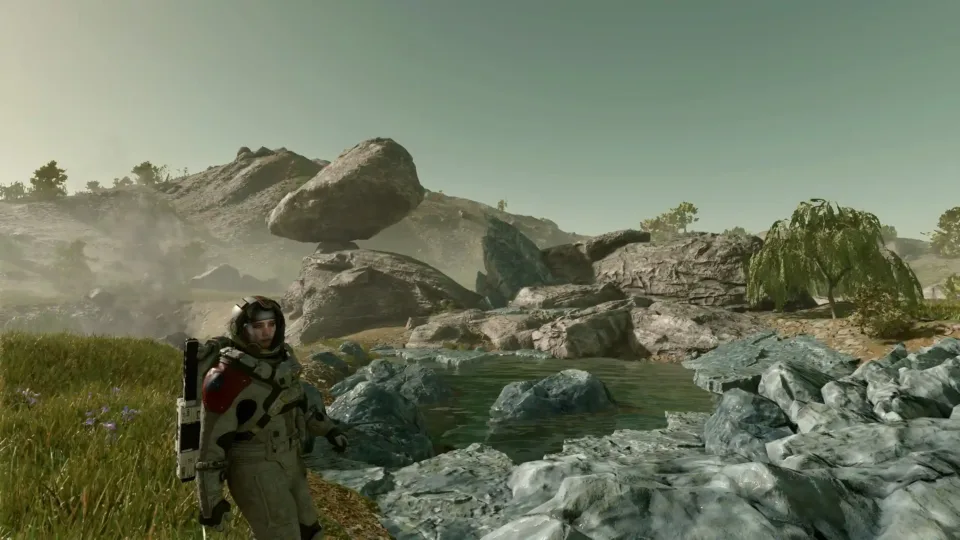
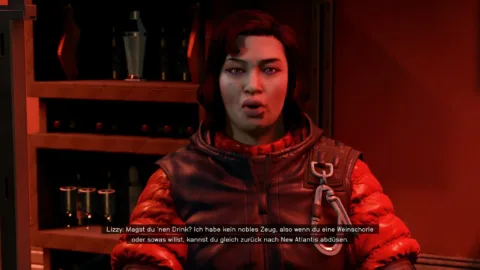
Women of Starfield
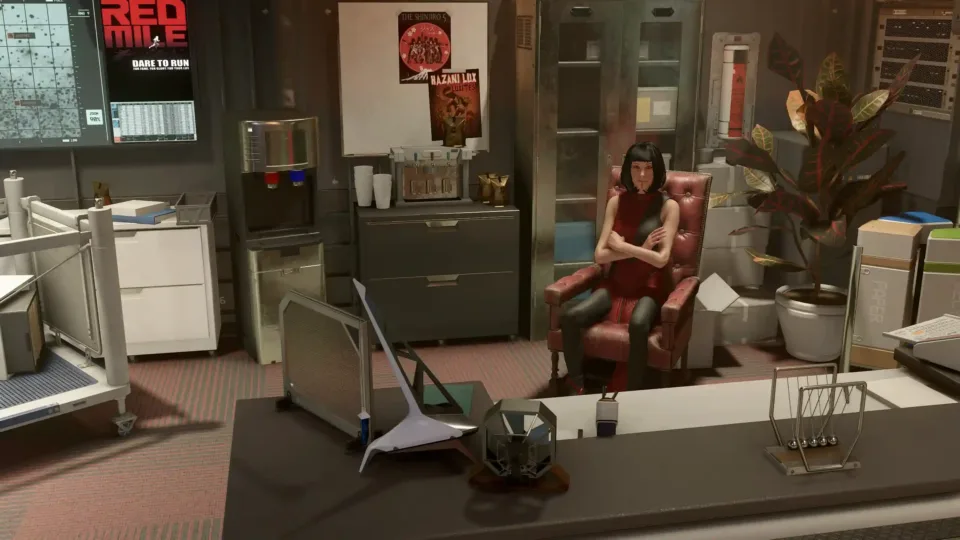
a modern smugglers den
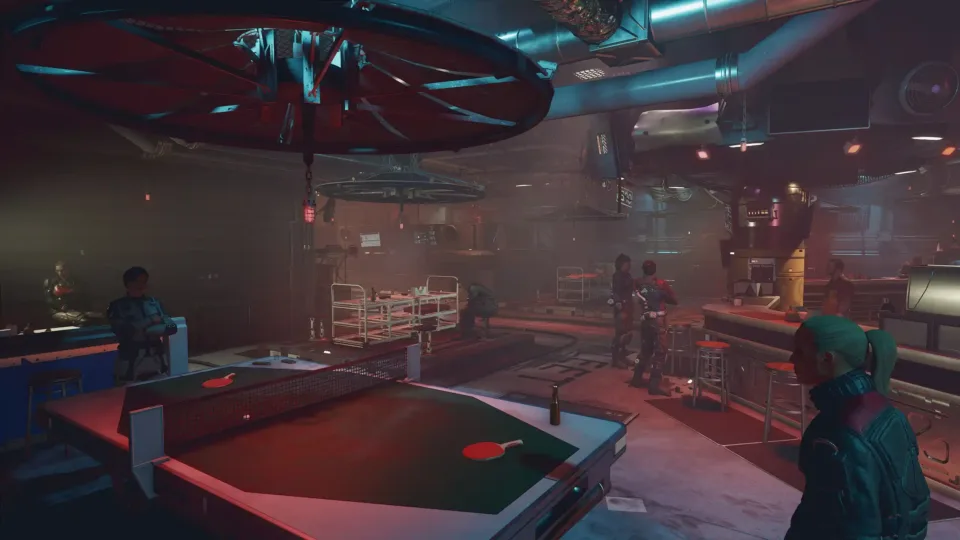
A pirate dive
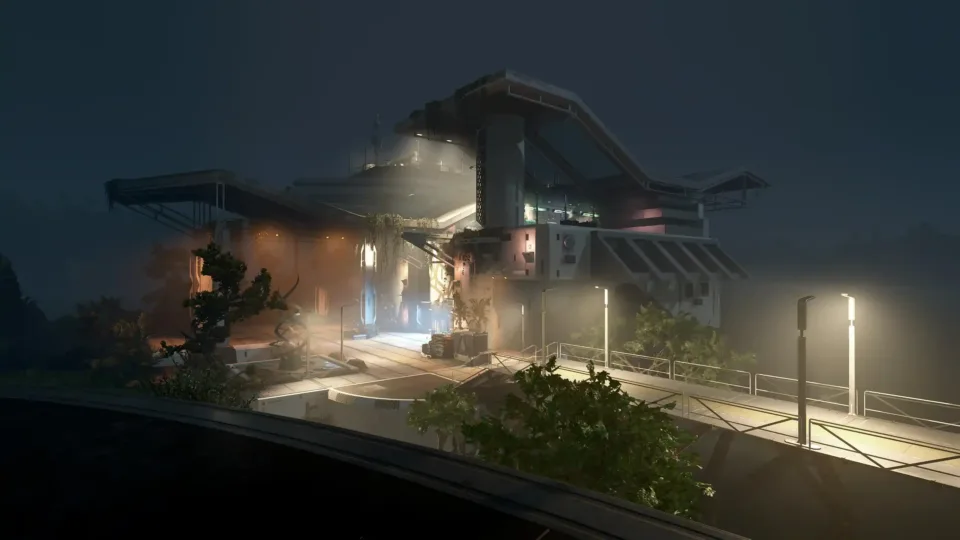
a rich man’s villa
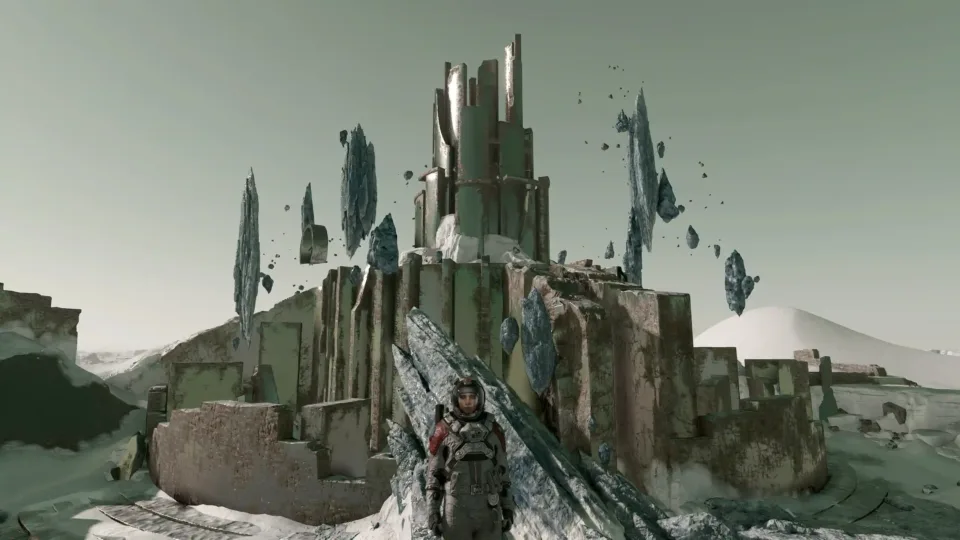

![Starfield Review - Bethesda's Space Role-Playing Game in the Test 2 Starfield Review - Grandioses Space RPG mit spitzen Ecken & harten Kanten im Test [PC Deutsch]](https://i.ytimg.com/vi/et1x2C489pQ/maxresdefault.jpg)
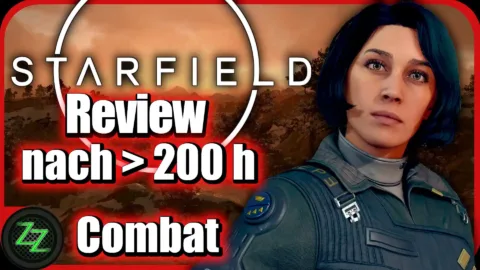
![Starfield Review - Bethesda's Space Role-Playing Game in the Test 37 Starfield Review - Grandioses Space-RPG mit spitzen Ecken & harten Kanten im Test [PC Deutsch] - 14 Tempels and Skills - Tempel und Fähigkeiten](https://zapzockt.de/wp-content/uploads//Starfield-Review-Grandioses-Space-RPG-mit-spitzen-Ecken-harten-Kanten-im-Test-PC-Deutsch-14-Tempels-and-Skills-Tempel-und-Fahigkeiten-480x270.webp)
![Starfield Review - Bethesda's Space Role-Playing Game in the Test 39 Starfield Review - Grandioses Space-RPG mit spitzen Ecken & harten Kanten im Test [PC Deutsch] - 16a Rating with numbers - 80 percent - Wertung mit Zahlen - 80 Prozent](https://zapzockt.de/wp-content/uploads//Starfield-Review-Grandioses-Space-RPG-mit-spitzen-Ecken-harten-Kanten-im-Test-PC-Deutsch-16a-Rating-with-numbers-80-percent-Wertung-mit-Zahlen-80-Prozent-480x270.webp)


![Forspoken Review - Save a Strange World Full of Light and Shadow - Test Forspoken Review [Deutsch PC] Rette eine fremde Welt voller Licht und Schatten - Test-German](https://zapzockt.de/wp-content/uploads/Forspoken-Review-Deutsch-PC-Rette-eine-fremde-Welt-voller-Licht-und-Schatten-Test-German-240x135.webp)
